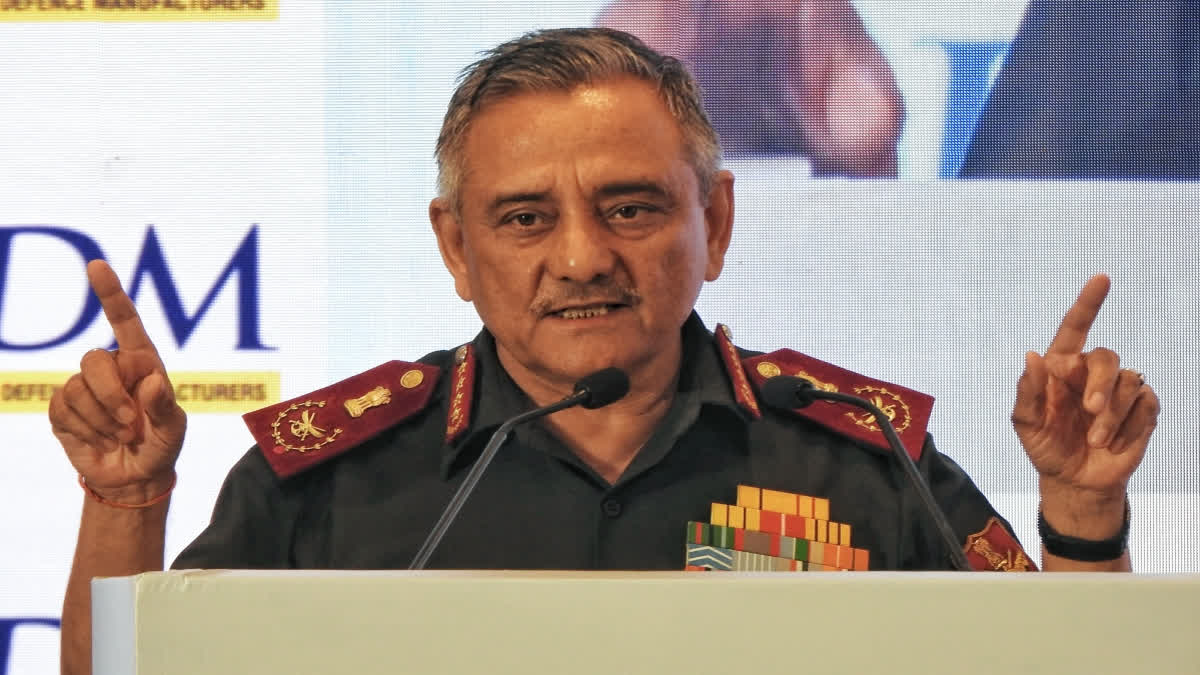New Delhi: Presenting a blueprint to the government on integrated theatre commands and creating them will now be a key priority, Chief of Defence Staff Gen Anil Chauhan said on Sunday, days after Defence Minister Rajnath Singh declared 2025 as the 'year of defence reforms'. Gen Chauhan also said that making a joint planning and operation room to help enable the three services to conduct integrated operations will be another focus area for the military under organisational and structural reforms.
In a podcast, the CDS said joint doctrines are being prepared on subjects like multi domain operations, airborne and heliborne operations, network centric warfare, joint communications, conventional missile force, space, joint staff work, joint logistic architecture, etc. Work is underway on a 'Vision 2047' roadmap for the armed forces and it will be released in middle of this year, he said.
The defence ministry's aim on theatre commands assumes significance as it virtually indicated a resolve to unveil the ambitious reform measure in 2025. Under the theaterisation model, the government seeks to integrate the capabilities of the Army, Air Force and Navy and optimally utilise their resources for wars and operations.
As per the theaterisation plan, each of the theatre commands will have units of the Army, the Navy and the Air Force and all of them will work as a single entity looking after security challenges in a specified geographical territory. At present, the Army, Navy and the Air Force have separate commands.
Outlining modernisation of the armed forces, Gen Chauhan said an Integrated Capability Development Plan (ICDP) will be brought out and it will be slightly different from the previous Long-Term Integrated Perspective Plan. He said the global geopolitics in a big flux at present and rising uncertainty is driving nations to review their national security strategies and also increase defence budgets.
On ensuring jointness among the three services, he said the focus is on enhancing efficiency in planning and conduct of operations, capability development, training, communication, logistics, maintenance support, human resource development, administration and legal matters. Eight verticals were selected to bring about integration amongst the three services and work on 196 activities under these verticals is already underway, he said.
The prime objectives of jointness are to develop capability that will take into account the changing nature of warfare in the future and to create integrated structures that can carry out multi domain operations. To be able to operate across the spectrum of conflict will be another priority, he said.
Gen Chauhan also noted that work is underway on a future technology capability roadmap that will feature specific policies in areas such as space, artificial intelligence, manned-unmanned teaming, and lethal autonomous systems.
On organisational and structural reforms, he said presenting the blueprint for integrated theatre commands to the government and creating them will be a major priority. On the challenges facing the military, he said to correctly understand the future and how the future wars will be fought and to be able to win the future conflicts will be among them.
It is important to undergo the process of learning and unlearning and relearning, he said, adding it will be something like being creative, then exploiting it, using it and then destroying it. To have all the desired capabilities together in future would be the biggest challenge, he said.



